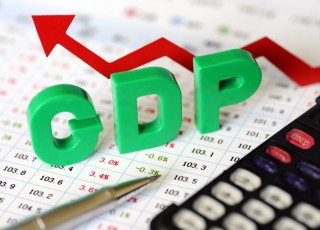On Tuesday 23rd of May 2017, the National Bureau of Statistics (NBS) released its first quarter (Q1) GDP figure for 2017. According to the report, Nigeria’s economic growth contracted by 0.52 percent in Q1 2017, representing the best performance in the last four quarters. From research, Nigeria’s highest Gross Domestic Product (GDP) growth rate remains 14.6 percent, which was recorded in 2006.

In the fourth quarter of 2016, the economy contracted by 1.73 percent and 0.67 percent in Q1 2016. This is the country’s fifth consecutive negative quarterly GDP and it is much better than the last quarter GDP of -1.73 percent.
How the oil and non-oil sector fared in the first quarter of 2017?
According to NBS, the report also revealed that the non-oil sector contributed 91.10 percent to the growth of the GDP as opposed to the oil sector, which contributed 8.90 percent.

The oil sector:
During the period under review, oil production, averaged at 1.83 million barrels per day (mbpd), which is higher than 1.76 mbpd produced in the fourth quarter of 2016 but below 2.13mbpd in 2015.
The growth rate of the oil sector to the GDP contracted by -11.64 percent in Q1 of 2017 representing a -4.81 percent decline from 6.83 percent recorded in the corresponding quarter in 2016.
The non-oil sector
In the first quarter of 2017, the non-oil sector to the GDP performed better by growing 0.72 percent. This is 1.05 percent higher than the rate recorded inQ4 of 2016 and 0.90 percent higher than Q1 in 2017.
Growth in the non-oil sector was largely driven by the activities in the Agricultural sector, Information and Communication sector, Manufacturing sector, Transportation sector and other services.
A look at how some key sectors fared in Q1 of 2017
Agricultural Sector
The Agriculture sector is made up of four sub-activities: crop production, livestock, forestry and fishing with crop production being the largest contributor of the sector. In the first quarter of 2017, crop production accounted for 92 percent of the sector.
According to NBS, in nominal terms (without taking inflation into account), the sector grew by 9.80 percent year-on-year. This was 4.35 percent points lower than the growth rate recorded in the first quarter of 2016.
During the quarter under review, Agriculture contributed 18 percent to nominal GDP. This was lower than 19.19 percent shares recorded in the corresponding period of 2016 and the 21.35 percent recorded in the fourth quarter of 2016.
Mining and Quarrying
The Mining and Quarrying sector has four sub-activities, which are crude petroleum and natural gas, coal mining, metal ore and quarrying and other minerals. The mining and Quarrying sector contributed 8.27 percent to the overall GDP of the quarter under review. The oil sector grew by 140.67 percent in the first quarter. Coal mining activities in the sector increased by 19.28 percent and metal ore activities increased by 64.60 percent. This growth rate was as a result of the naira depreciation, which increased the naira value of oil export as well as a stronger oil price.
Manufacturing
There are over thirteen activities in Nigeria’s Manufacturing sector, which include: oil refining, cement, food, beverages, tobacco, textile, apparel, footwear, wood and wood products, pulp paper and paper products, chemical and pharmaceutical products, nonmetallic products, plastic and rubber products, electrical and electronic, basic metal and iron and steel and motor vehicles and assembly.
NBS revealed that for the first quarter of 2017, the manufacturing sector in real terms grew by 1.36 percent compared to an increase of 8.36 percent recorded in the same period of 2016. This is the first positive growth rate recorded for over a year.
Information and Communication
The Information and Communication sector is made up of telecommunications and information services, publishing, motion picture, sound recording and music production, and broadcasting. The sector grew year on year by 2.73 percent in real terms in the first quarter of 2017, compared to 1.33 percent in Q1 2016. The main drivers of this growth were telecommunications and information services.
Finance and Insurance
The Finance and Insurance Sector consists of the two subsectors: financial institutions and insurance firms. In nominal terms, financial institutions account for 86.83 percent of the sector and insurance firms account for 13.17 percent of the sector.








